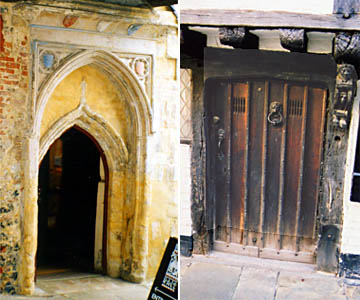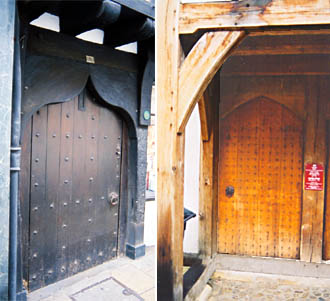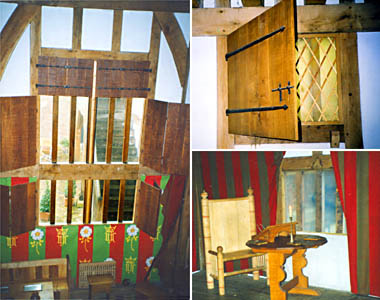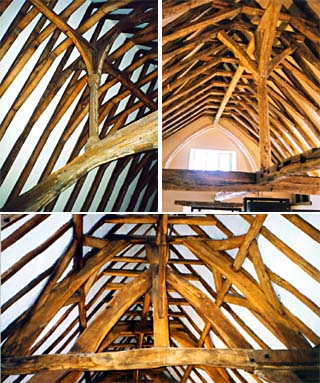
Doorways at Norwich and Canterbury
Photos © S. Alsford

Doorways at York
Photos © S. Alsford
Few doorways to domestic buildings survive that are clearly medieval,
although some from the sixteenth century are much of the same style.
Those shown above are:

Windows at Barley Hall, York
Photos © S. Alsford
Window technology has developed far more than that of doors, and so little now remains in medieval houses of the original windows. Barley Hall provides reconstructions of those: (left) a large window, with multiple folding shutters, threw plenty of light into the Great Hall; (top right) single-shutter window in the storeroom, covered with treated linen to let in light but keep out drafts; (bottom right) window in the upper floor parlour. Even in a building such as London's Guildhall only one of the medieval windows has survived.
Medieval roof support structures have occasionally survived, in part because hidden from view and interference. The crown-post roof truss is the most striking form. The timbers on which roofing was laid were supported by multiple arms attached to the central post; the post itself sat atop one or more tie-beams, which distributed the weight of the roof back into the walls of the building. These elaborate support structures are usually found in large rooms such as halls.

Roof support structures:
(top left) The merchant's 'showroom' at Dragon Hall,
Norwich (ca.1450); (top right) the chapel of the
Poor Priests Hospital,
Canterbury (1373); (bottom) the
Merchant Adventurers Hall, York
(late 14th century)
Photos © S. Alsford